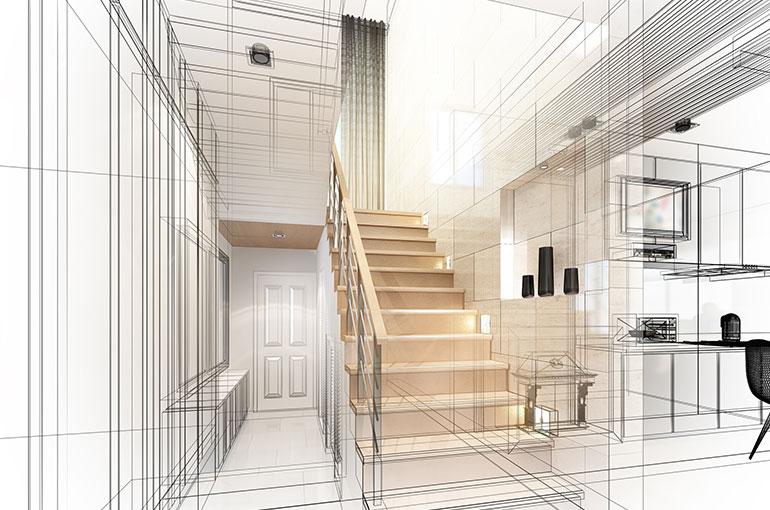The Influence of Technological Developments on the Design Practices of Contemporary Architects
The rapid advancement of technical tools has significantly improved the style landscape for contemporary architects, cultivating unmatched levels of technology and sustainability. The combination of Building Details Modeling (BIM), parametric style, and synthetic intelligence has not just streamlined cooperation amongst diverse groups but additionally redefined job execution. Nonetheless, as designers embrace these improvements, they are faced with intricate difficulties that could influence their creative procedures. Checking out these characteristics reveals a nuanced interplay in between technology and standard design methods, prompting a better examination of what the future holds for architectural techniques.
Advancement of Architectural Tools
Just how have building devices changed the style and building and construction procedures over the centuries? The development of architectural tools has considerably impacted the efficiency, precision, and creative thinking of layout and building and construction.
With the development of the Renaissance, the intro of the compass and the protractor marked a critical shift. These devices made it possible for designers to accomplish greater precision in their layouts, assisting in the development of more intricate and in proportion buildings. The Industrial Revolution further changed building practice with the intro of mechanical tools and products, enabling for larger and extra enthusiastic projects.
In the 20th century, the growth of computer-aided style (CAD) software changed the landscape when again, providing engineers with unmatched capabilities in modeling and visualization. Today, progressed tools such as Structure Information Modeling (BIM) and parametric layout software application continue to press the boundaries of architectural innovation, allowing a more incorporated method to layout and building procedures.
Enhanced Collaboration in Layout
As innovation continues to advance, improved partnership in layout has come to be a cornerstone of modern-day architectural method. The assimilation of electronic tools such as Structure Information Modeling (BIM), cloud-based platforms, and progressed visualization software has actually changed the way designers, designers, and stakeholders interact throughout the style procedure. These devices help with real-time interaction, permitting teams to share ideas, adjustments, and responses promptly, despite geographical place.

Additionally, interdisciplinary collaboration has actually been structured via these technical improvements, allowing designers to work much more closely with various other specialists, such as metropolitan coordinators and environmental specialists. The result is a more natural approach to develop that thinks about different perspectives and competence. Ultimately, enhanced cooperation in layout is not simply a trend; it is essential for developing ingenious, functional, and cosmetically pleasing design in an increasingly intricate globe.
Sustainability Through Innovation
Sustainability in style has significantly become intertwined with technical innovation, driving the market towards ecologically liable practices - cda architects. Contemporary designers are leveraging innovative technologies to reduce ecological influence while enhancing the performance of buildings. One famous instance is using Building Info Modeling (BIM), which enables precise planning and resource allowance, minimizing waste throughout construction and promoting energy performance throughout a structure's lifecycle
Moreover, smart materials and energy-efficient systems are being integrated into layouts to optimize source usage. Technologies such as photovoltaic cells and eco-friendly roofing systems harness renewable resource resources, adding to minimized carbon footprints. Additionally, the application of expert system in style procedures allows designers to mimic and examine power usage, assisting decisions toward more sustainable outcomes.
The integration of lasting technologies not only aligns with global learn this here now ecological objectives however likewise satisfies a boosting demand from consumers for environmentally friendly services. As architects embrace these innovations, the emphasis changes towards creating spaces that are not just visually pleasing however likewise functionally sustainable, therefore redefining the criteria of contemporary architecture. This way, modern technology works as a driver for sustainability, enabling engineers to make buildings that respect and boost the natural surroundings.
Obstacles in Application
While technological innovations in design hold fantastic promise for boosting sustainability, their application try this site often runs into considerable challenges - cda architects. One main obstacle is the high knowing contour connected with new technologies. Engineers and construction professionals might require considerable training to effectively use advanced software application and tools, which can delay task timelines and enhance prices
Additionally, the combination of arising innovations, such as Structure Info Modeling (BIM) and lasting materials, commonly necessitates partnership throughout multidisciplinary teams. This partnership can be prevented by differences in proficiency, operations, and interaction styles, causing possible conflicts and ineffectiveness.
Financial restraints further complicate the adoption of ingenious technologies. Numerous architectural companies, specifically smaller sized ones, may lack the resources to spend in sophisticated devices, limiting their ability to take on bigger companies that can manage such financial investments.
Moreover, regulatory frameworks and building regulations may not keep speed with technical innovations, developing obscurity and potential compliance issues. This challenge can discourage architects from fully accepting new innovations, as the risk of non-compliance may outweigh the benefits. Therefore, dealing with these implementation challenges is essential for the successful combination of technological developments in contemporary architectural techniques.
Future Trends in Architecture
The obstacles related to the application of new modern technologies in style have actually prompted a reevaluation of future trends within the sector. As designers navigate concerns such as sustainability, urbanization, and social equity, they are progressively adopting innovative modern technologies to enhance design performance and ecological performance.
One noticeable pattern is the integration of expert system (AI) in the design procedure. AI tools next can analyze huge datasets to notify layout decisions, enhancing both imagination and functionality. Building Info Modeling (BIM) proceeds to develop, enabling real-time partnership amongst stakeholders and helping with structured project administration.
Lasting design methods are also acquiring energy, with architects concentrating on flexible reuse and regenerative design principles that decrease resource usage and waste. The unification of smart materials and eco-friendly power sources will certainly better enhance the durability of structures despite climate modification.

Final Thought
Technological developments have dramatically reshaped building style techniques, assisting in enhanced accuracy, collaboration, and sustainability. The assimilation of tools such as Structure Info Modeling and parametric design software application, alongside man-made knowledge and clever materials, equips architects to attend to complex obstacles a lot more effectively.